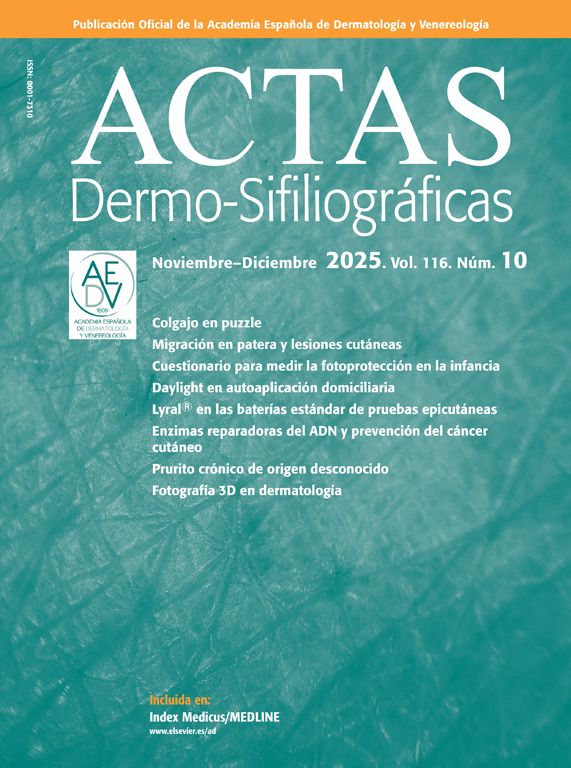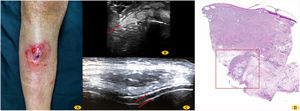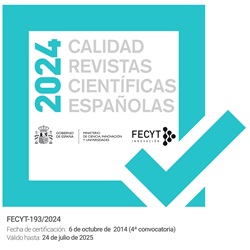A 53-year-old man with a history of gout was evaluated in the dermatology department for the presence of an ulcerated, densely friable nodule with a deposit of hard white material on the surface, without purulent discharge (Fig. 1A). The nodule had appeared 6 months earlier. Soft tissue ultrasound revealed a heterogeneous mass with a lobulated border and hyperechoic trabecular structures (Fig. 1B). Ultrasound examination of the right knee revealed minor effusion and the presence of the double contour sign, which is considered highly suggestive of urate deposition in the hyaline cartilage (Fig. 1C). Histology showed amorphous basophilic material surrounded by a foreign-body-like giant-cell reaction with focal lymphohistiocytic infiltrate (Fig. 1D). Uric acid levels were 9.5mg/dL (3.4–7.0mg/dL). All other laboratory parameters were within the normal range. In terms of the pathophysiology of gouty panniculitis, venous stasis and pre-existing tissue damage are factors that, together with repeated microtrauma, make patients more predisposed to urate crystal deposition on subcutaneous tissue. Serum uric acid levels do not appear to be directly related to the development of panniculitis, as was previously suggested.
El factor de impacto mide la media del número de citaciones recibidas en un año por trabajos publicados en la publicación durante los dos años anteriores.
© Clarivate Analytics, Journal Citation Reports 2025
SJR es una prestigiosa métrica basada en la idea de que todas las citaciones no son iguales. SJR usa un algoritmo similar al page rank de Google; es una medida cuantitativa y cualitativa al impacto de una publicación.
Ver másSNIP permite comparar el impacto de revistas de diferentes campos temáticos, corrigiendo las diferencias en la probabilidad de ser citado que existe entre revistas de distintas materias.
Ver más




